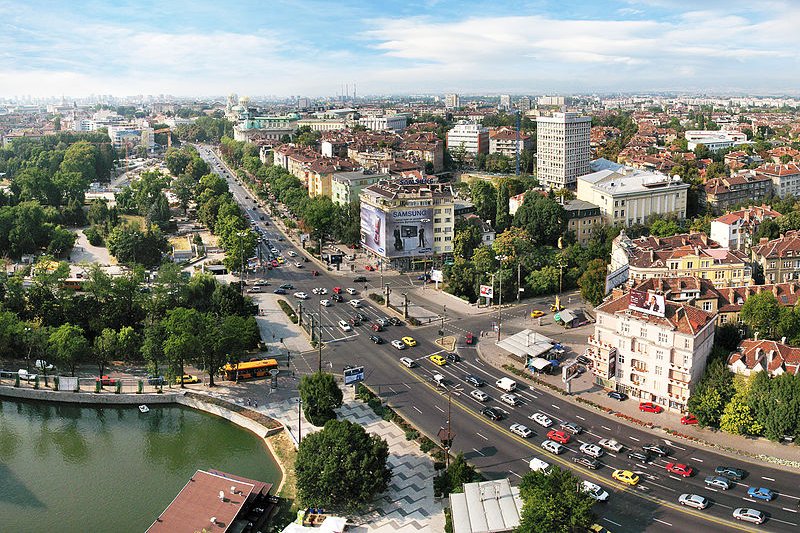 Sofia, Bulgaria
Sofia, BulgariaSource: https://commons.wikimedia.org/wiki/File:Downtown_Sofia_Boby_Dimitrov_1.jpg
Author: Boby Dimitrov

Sofia (София) is the capital and biggest city in Bulgaria. It is located on the central western part of the country. Sofia covers 1,345 sq km (519.3 sq mi) and has a population of 1.3 million people (2011 estimate). It is in the Eastern European Time zone, which is two hours ahead of Coordinated Universal Time (UTC+2), and three hours ahead during Daylight Saving Time in summer. The phone area code here is (+359) 02.
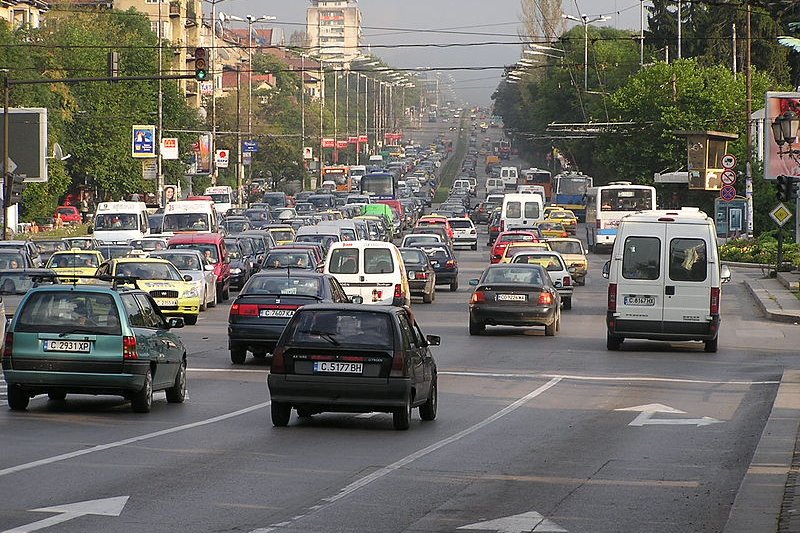 Sofia traffic
Sofia trafficSource: https://commons.wikimedia.org/wiki/File:Sofia-traffic-03.jpg
Author: Делян

Sofia is within a valley surrounded by tall mountains. It is the largest valley in Bulgaria. To the north is the Vitosha mountain massif, which rises to 2,290 m (7,513 ft). Sofia experiences a humid continental climate. Its warmest months are July and August, when the average temperature rises to 27°C (81°F). Coldest month is January, when the average low temperature drops to -6°C (21°F). Snow can be expected from November until March.
Sofia has ample parks and parklands, many of which are forested. Hiking in the mountain is one of the recreational activities of the locals. There are also ski slopes with good views of the countryside and the city.
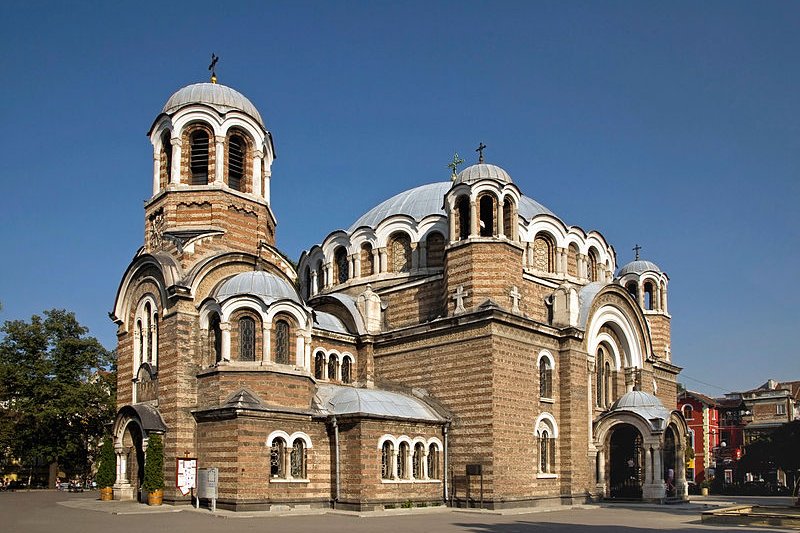 Sveti Sedmochislenitsi Church, Sofia
Sveti Sedmochislenitsi Church, SofiaSource: https://commons.wikimedia.org/wiki/File:SvetiSedmochislenitsiChurch-Sofia-3.jpg
Author: Plamen Agov - studiolemontree.com

The architecture of Sofia range from ancient Roman ruins to modern skyscrapers. Among its heritage sites include the 10th century Boyana Church, today one of Bulgaria's World Heritage Sites.
The history of Sofia goes back to Celtic times, when it was a settlement known as Serdica. During the 4th century, it was ruled by Philip of Macedon and his son, Alexander the Great. The city was captured by the Romans in AD 29. Under Roman Emperor Diocletian, Serdica became the capital of Dacia Mediterranea.
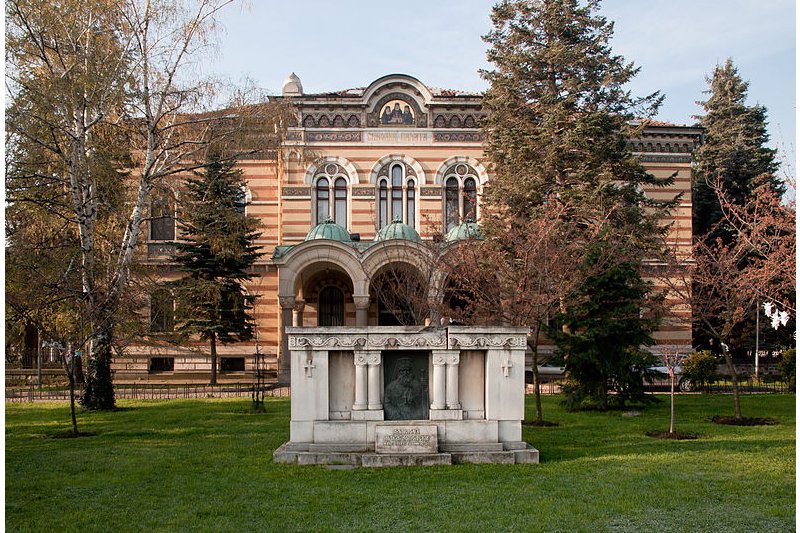 Holy Synod Palace, Sofia
Holy Synod Palace, SofiaSource: https://commons.wikimedia.org/wiki/File:Holy_Synod_Palace_-_Sofia_.jpg
Author: Plamen Agov - studiolemontree.com

In AD 809, Serdica became part of the First Bulgarian Empire. It became known as Sredet, and was an important fortress town. The name Sofia first came to be used around 1376. The name means "wisdom" in Ancient Greek. The city fell under the Ottoman Empire in 1382, and was under Turkish rule for centuries, until 1878.
Under the Ottoman Turks, Sofia became the capital of the Ottoman province of Rumelia. During Ottoman rule, Islamic lifestyle was introduced to the city. There were many mosques, fountains and bathhouses erected. During this long period, the Christians faced discrimination and persecution.
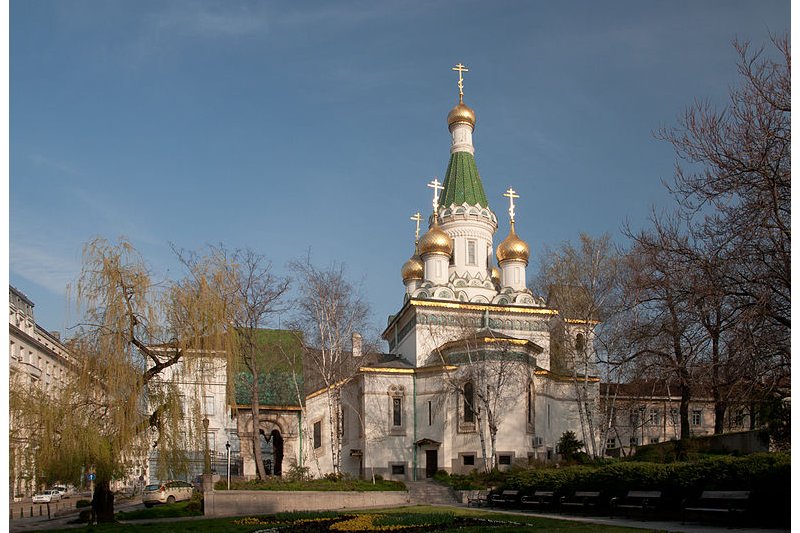 Russian Church, Sofia
Russian Church, SofiaSource: https://commons.wikimedia.org/wiki/File:Russian_church_Sofia.jpg
Author: Plamen Agov - studiolemontree.com

Ottoman rule over Sofia came to an end when Russian forces overran it in 1878, during the Russo-Turkish War. It was made the capital of the autonomous Principality of Bulgaria. During the Second World War, Bulgaria was allied to Germany. It was overthrown by the Red Army, which proceeded to create the People's Republic of Bulgaria in 1946.
The collapse of the Soviet Union in 1989 marked the beginning of a transition for Bulgaria from a Communist state to a democratic, free-market capitalist state. Sofia remains unchanged as its capital.
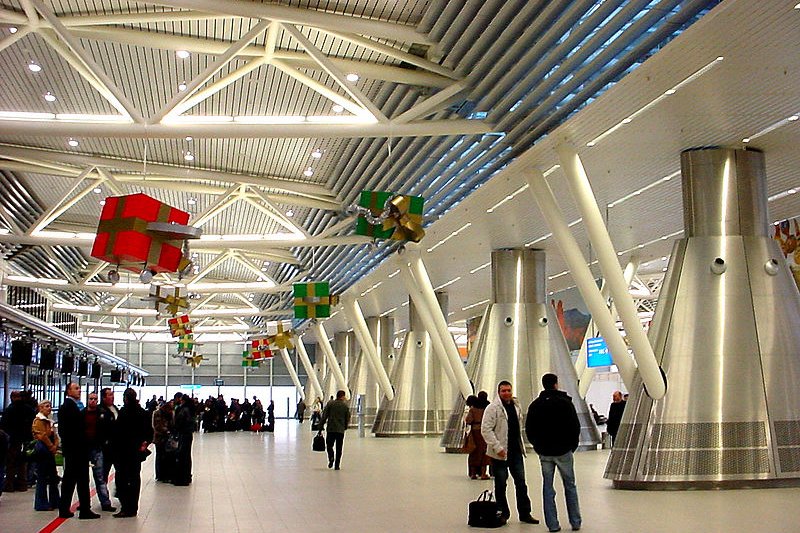 New terminal of Sofia Airport
New terminal of Sofia AirportSource: https://commons.wikimedia.org/wiki/File:NuevaTerminalAeropuertodeSofia2.jpg
Author: Spartakus79

Visiting Sofia, Bulgaria
Sofia Airport (SOF) is the busiest in Bulgaria. Most of its flight connections are with cities in Europe. The airport has two terminals. Terminal 1 is used by chartered flights as well as low-cost carriers such as EasyJet, Germanwings and Wizz Air, while Terminal 2 by the mainstream carriers. A shuttle bus connects the two terminals, which are a few kilometers apart.To leave the airport, you have the option to take the airport bus, the shuttle bus and taxis. The Airport Bus starts at Terminal 2, stops over at Terminal 1, and continues to downtown Sofia. Any baggage larger than 40 cm x 40 cm x 60 cm will need an extra ticket.
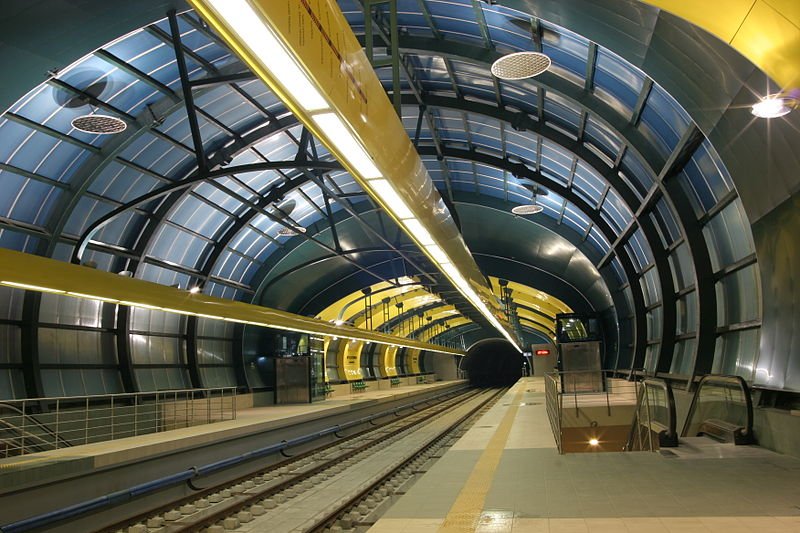 Musagenitca Metro Station, Sofia
Musagenitca Metro Station, SofiaSource: https://commons.wikimedia.org/wiki/File:IMG_1405.JPG
Author: Farid p

The shuttle bus connects the airport to various hotels. There are counters for it at the airport Arrival Hall. Taxis to downtown Sofia will cost you about 10-12 leva.
Exploring Sofia
Sofia has an excellent public transport system comprising subway, trams, trolleybuses and buses. A single-journey ticket costs 1 lev. You can also buy a 10-ticket booklet for 8 lev, or combined subway-and-ground-transport tickets for 1.4 lev, daily pass for 4 lev, and 5-day pass for 15 lev.Places of Interest in Sofia, Bulgaria
- Aleksandûr Nevski Memorial Church
- Archaeological Museum
- Church of Sveta Nedelya
- Church of Sveta Sofia
- Mount Vitosha
- National Art Gallery
- National Gallery of Foreign Art
- National History Museum
- Russian Church
- Sofia Synagogue
 Latest updates on Penang Travel Tips
Latest updates on Penang Travel Tips
 Discover with Timothy YouTube Channel
Discover with Timothy YouTube Channel
 PG Food Channel
PG Food Channel
 Learn Penang Hokkien YouTube Channel
Learn Penang Hokkien YouTube Channel
 SojiMart Videos
SojiMart Videos
Latest from Discover with Timothy: Gurney Bay - what to see and do there
About this website

Hello and thanks for reading this page. My name is Timothy and my hobby is in describing places so that I can share the information with the general public. My website has become the go to site for a lot of people including students, teachers, journalists, etc. whenever they seek information on places, particularly those in Malaysia and Singapore. I have been doing this since 5 January 2003, for over twenty years already. You can read about me at Discover Timothy. By now I have compiled information on thousands of places, mostly in Peninsular Malaysia and Singapore, and I continue to add more almost every day. My goal is to describe every street in every town in Malaysia and Singapore.
Robbie's Roadmap
- Episode 1: Robbie's Journey to Financial Freedom
- Episode 2: Lost in America
- Episode 3: The Value of Money
- Episode 4: The Mentor
- Episode 5: The Thing that Makes Money
- Episode 6: The walk with a Billionaire
- Episode 7: The Financial Freedom Awakening
- Episode 8: Meet Mr Washington
- Episode 9: The Pizzeria Incident
Copyright © 2003-2024 Timothy Tye. All Rights Reserved.


 Go Back
Go Back